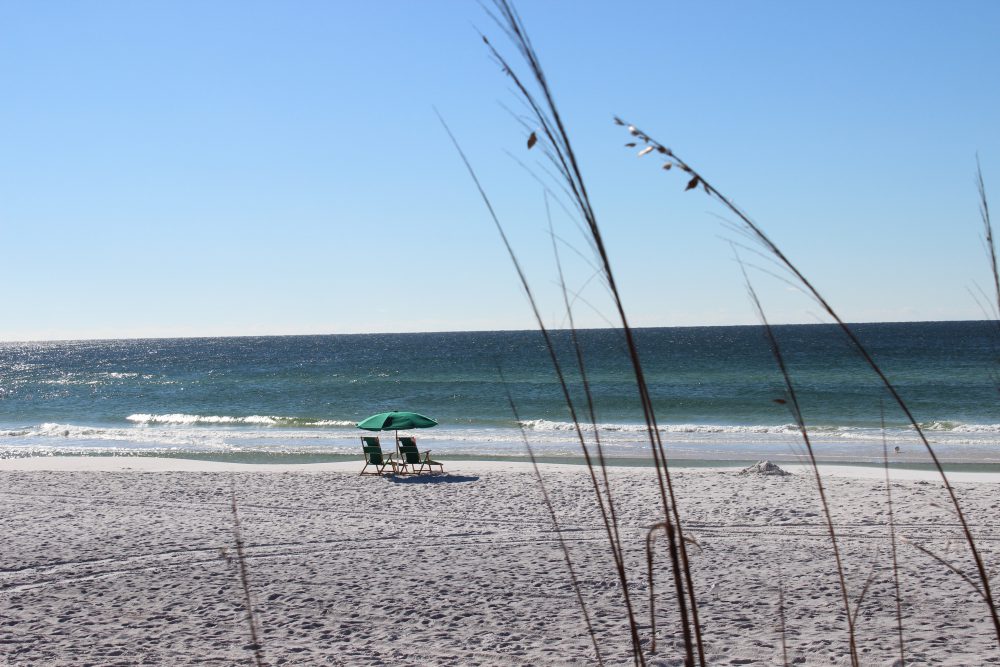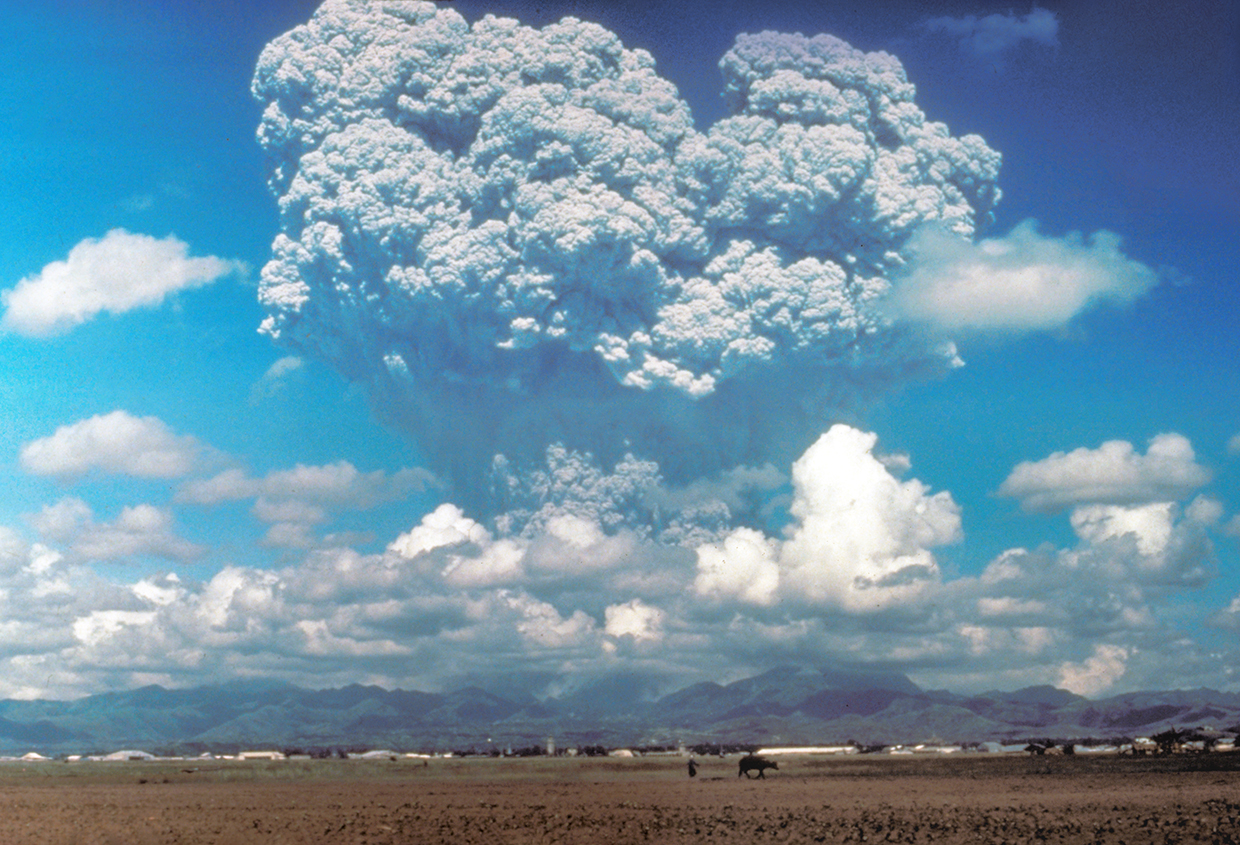Many from the “baby boomer” generation, which includes me, can probably tell you weather patterns have changed since we were kids. Growing up in Pensacola I remember the pattern of a typical summer day. It would be sunny in the morning, when most of us would get out and do our daily activities, whatever those might have been. The land breezes would shift to sea breeze around noon and by mid afternoon there would be a thunderstorm. These storms generally passed quickly and were followed by a sunny, but cooler afternoon with wonderful sunsets. Most summer days were like this. During winter we generally had frost on the ground – at least three days a week. Again, those who grew up with this I am sure have noticed – it has changed.

In the past people would enjoy the beach in the mornings before the daily afternoon thunderstorm.
Photo: Rick O’Connor
Our summer days now seem to be periods of several long hot days with little or no rain at all. When rain does come it seems to be intense, it could last all day and may occur for several days in a row. We will go through periods of intense rain followed by days of all most drought conditions. The days seem to be hotter. If you watch the news, we are continually breaking temperature records. The same could be said about rainy days, there have been several “100-year flood” events in the past decade. Hurricanes were once things we dealt with once in a decade, we now seem to be in the “cone of uncertainty” of some storm each season.
In addition to the changes with weather have come changes with coastal plants and animals. Mangroves, snook, and bone fish – all once thought of as “south Florida species” are now appearing along the Florida panhandle. Manatee encounters are increasing and the threat of invasive species – which once was not an issue due to our colder winters – is something we now must look at. It is changing. As we observe these changes, I often get the question – “is this due to climate change?”
In the 1990s I taught environmental science at Pensacola State College and AP Environmental Science at Washington High School. Climate change was a topic we covered and discussed the latest science behind the topic. I still have the textbook I taught from and thought it might be interesting to look back at what was being said at the time and whether the predictions given were actually happening. The chapter on climate change began with a case study. It provided the following:
In June of 1991 the active volcano Mount Pinatubo in the Philippines erupted. The eruption released ash and compounds 22 miles up into the atmosphere. Hot gases and ash rolled down the mountain side killing hundreds of people and filling valleys with toxic materials. It destroyed communities and caused hundreds of millions of dollars’ worth of damage. Despite the horrific impact it also provided scientists with an opportunity.
Climate scientists had been monitoring global warming for a couple of decades at that point and had developed computer models that could predict both the change of climate in the future (if such warming trends continued) and what impacts these changes may have. But unlike the computer models used to predict the course and landfalls of hurricanes, they had no way of testing them. But with the eruption of Mt. Pinatubo, the opportunity was there.
Based on such models, James Hansen, a NASA scientist at the time, predicted the volcanic eruption would first cool the planet 1°F over a 19-month period and then begin to warm. He predicted that by 1995 temperatures would return to normal. His predictions proved correct. The model had passed the test. This case helped convince most scientists and policy makers that climate model projections should be taken seriously.
Hansen’s model, and 18 other climate models, indicated that global temperatures were likely to rise several degrees during the century – mostly due to human actions – and affect global and regional climates and economies.
Over the next few weeks, we will post a series of articles looking at what was discussed decades ago and see whether the weather patterns we are experiencing match the predictions we discussed in class at that time. We will take another look at climate change.
Part 2 – How Might the Earth’s Temperature and Climate Change in the Future?
- Rattlesnakes on Our Barrier Islands; Part 4 – Thermoregulation - December 22, 2025
- Rattlesnakes on Our Barrier Islands; Part 3 – Envenomation - December 22, 2025
- St. Joe Red Tide Claiming Terrapins - December 15, 2025


